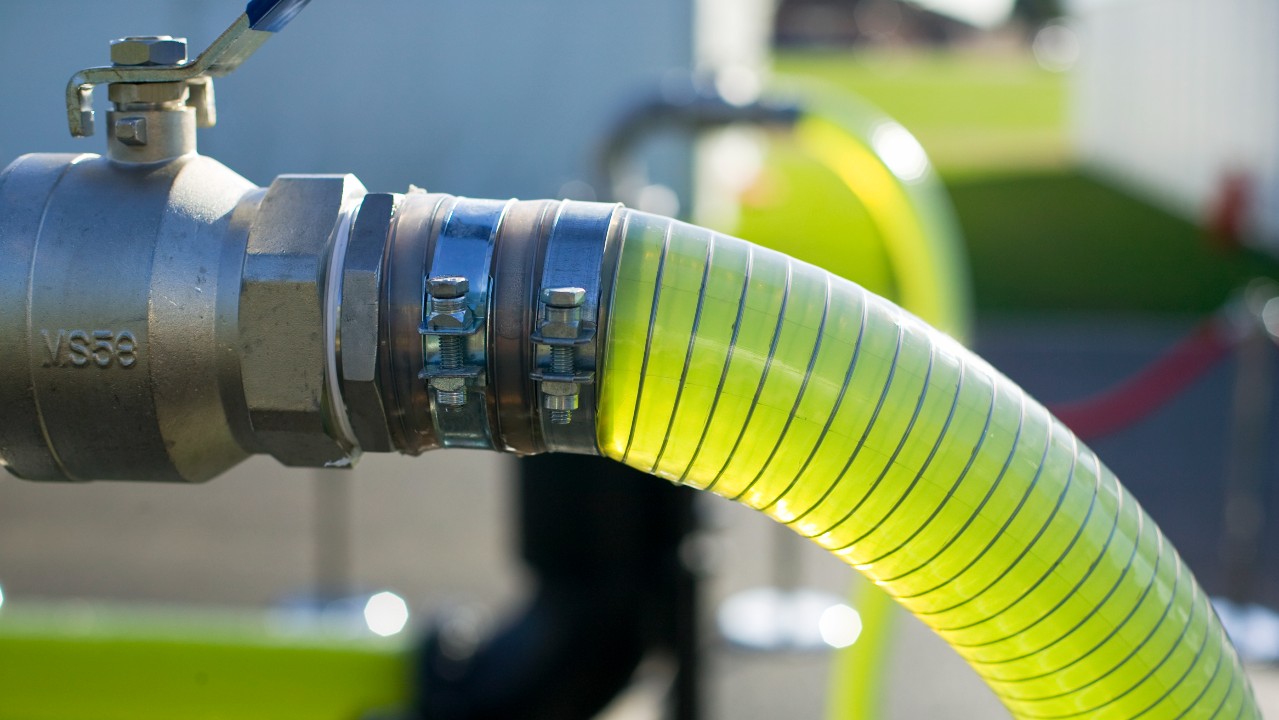Biofuel: Definition, types, pros and cons
Biofuels are the future of renewable fuel — but can they really replace petrol, are they genuinely carbon neutral, and how are they produced?

Biofuels can be made from some of the same ingredients used to bread and pizza, but instead of feeding your stomach they are used to power your car.
It’s well-established that fossil fuels are incredibly harmful, and they’re not renewable, either. When so many people rely on petrol- and diesel-power vehicles, it makes sense to develop a renewable alternative that’s easy to use.
That’s where biofuel comes in. The most common biofuel produced globally is ethanol, and it’s used frequently in Brazil and the U.S., while biodiesel is more popular in Europe.
Ethanol is a clear, flavourless alcohol that’s created by fermenting and distilling sugary crops like wheat, corn, and sugar cane. It’s combined with petrol to make fuel more environmentally friendly, and it’s already in widespread use. More than 95% of the petrol sold in the U.S. contains ethanol, and E10 fuel – made from 10% ethanol – is the standard petrol in the U.K., according to the BBC.
Alcohol combines with oil or fat to create biodiesel, and it works directly in many car engines. However, it’s usually combined with conventional diesel to create a more effective blend. This is usually produced from vegetable oil, animal fat, soy or palm oil.
Creating ethanol is a complex chemical process that starts with simple plant matter – whether it’s corn, wheat, sugar beet or some leftover potato skins. The plant’s cells contain a mixture of substances called cellulose, hemicellulose and lignin. Acids, enzymes, and other chemicals break the plants down, and the result is a pure sugar solution called sucrose.
At this point, scientists add yeast and the solution heats to between 482 and 572 degrees Fahrenheit ( 250 and 300 degrees Celsius). The yeast has an enzyme called invertase. Heat activates the enzyme and converts the sucrose into glucose and fructose. These sugars combine with another enzyme, called zymase, which converts them into ethanol, according to the National Center for Biotechnology Information.
That ethanol still has lots of water, though, so the next step involves boiling. Because ethanol boils at 172.94 °F (78.3°C) and water boils and 212 °F (100°C), the ethanol boils and turns into vapour first – so it can be separated from the water, condensed back to liquid, and used for biofuel.
Biofuel pros and cons
There’s a huge amount of potential in biofuel, and most of the big energy companies have already invested — but emerging energy sources like ethanol are first-generation biofuels, and they’ve got issues that need fixing before they can go mainstream, according to The Guardian.
It currently takes more ethanol than gasoline to produce the same amount of energy, for instance. Production is expensive, and several parts of the process sometimes use fossil fuels — which means that some biofuels aren’t actually carbon neutral.
Some environmental campaigners also say that it would be more useful to grow crops for food rather than biofuel, and that growing crops for biofuel can cause problems with soil erosion and deforestation. Using land for fuel rather than food can lead to an increase in food prices, too, and can hinder natural habitats.
Crop and fat-based biofuels may not be perfect, then, but those aren’t the only biofuels available — some organizations are creating biofuel with algae instead. This process uses water and land that often isn’t suitable for many other situations, so it doesn’t take up space that’s useful for food production, and it often has better yields than other types of biofuel.
There’s plenty of development beyond algae, too. Many companies are developing crops specially for biofuels, and those will improve yields, increase efficiency, and reduce costs. Some even use seaweed, according to The Guardian.
Scientists are also working on schemes that will be able to extract biofuels from household waste, wood chips and other junk – a move that could massively increase the material that’s viable for biofuel production. These second-generation biofuels could make biofuel far cheaper and more accessible.
Additional resources
For more information about biofuels, check out the Office of Energy Efficiency & Renewable Energy’s page on Biofuel Basics, “Handbook of Biofuels” by Sanjay Sahay and “Bioenergy and Biofuels” by Ozcan Konur.
Bibliography
- Clarence Lehman, “Biofuel”, Encyclopaedia Britannica, September 2021.
- U.S. Energy Information Administration, “Biofuels explained” August 2020.
- James Chen, “Biofuel”, Investopedia, October 2020.
- John Abraham, “Biofuels can help solve climate change, especially with a carbon tax”, The Guardian, March 2018.
- Office of Energy Efficiency & Renewable Energy, “Biofuel Basics”, Bioenergy Technologies Office, accessed January 2022.
- Christina Nunes, “Biofuel, explained”, National Geographic, July 2019.
- Damian Carrington, “Seaweed biofuels: a green alternative that might just save the planet”, The Guardian, July 2013.
- BBC News, “E10 petrol: Eco-friendly fuel being introduced to filling stations”, September 2021
- Tristan Shale-Hester, “E10 petrol explained: checker tool, UK prices and is it OK for your car”, Auto Express, December 2021.
Get the world’s most fascinating discoveries delivered straight to your inbox.
Mike is a freelance technology journalist and consultant who is fascinated with gaming, futuristic technology and motorsport. Previously, Mike has worked as a writer for PC Pro magazine writing and published articles on technology for many other media outlets, including TechRadar, Wired, PC Advisor, Stuff, The Inquirer and Red Bull Gaming.
- Scott DutfieldContributor

